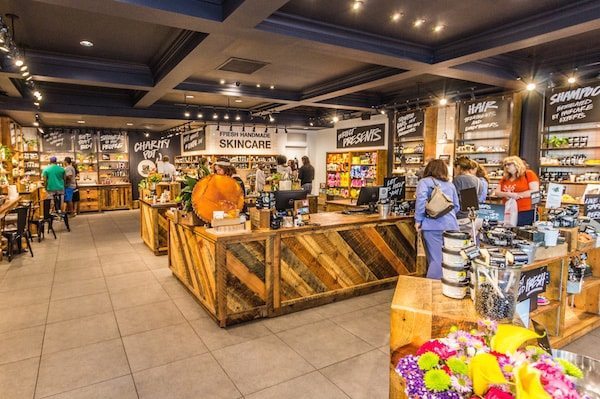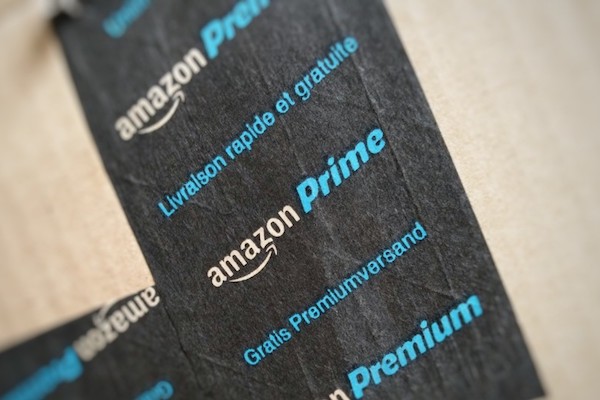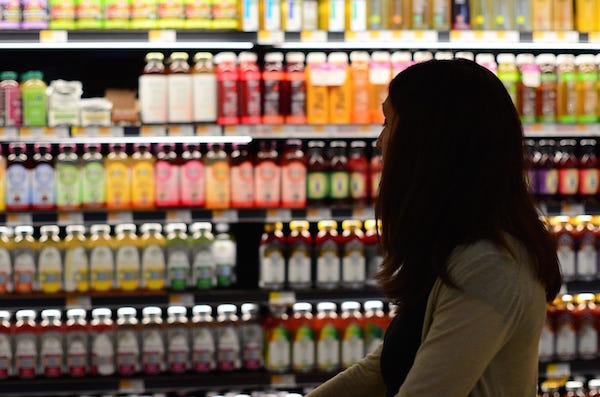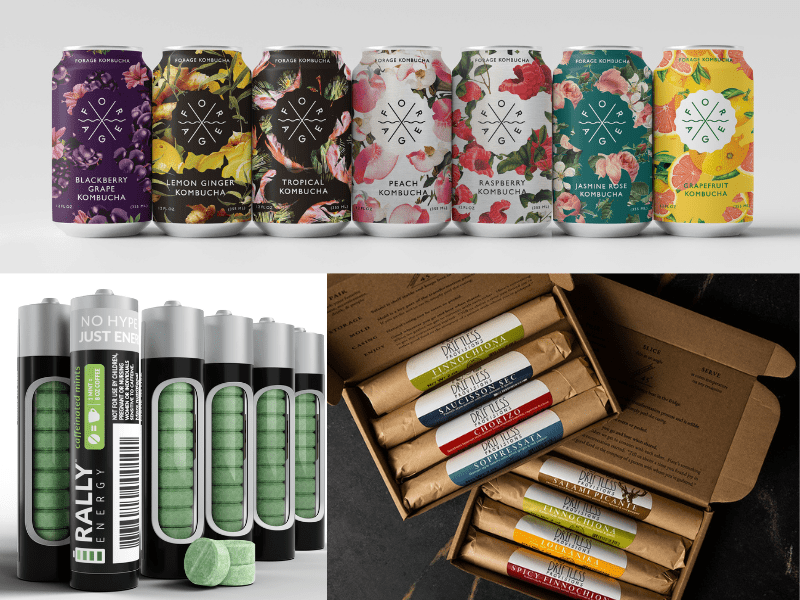“This product sells itself!” Have you ever heard that expression? It’s one of those clichés that is unfortunately not true. While there are things you can do to gain awareness, interest and trust in the marketplace, no product, food or otherwise, sells itself.
If you are a food business going into distribution at a physical grocery store, you have to spend money on things to position yourself to get trial by new customers searching through tens of thousands of SKUs. This includes discounting your product through a price promotion and/or paying slotting fees to get the “prime real estate” on the grocery store shelf. In addition, food businesses spend money on marketing to leverage relationships with customers to get them to go to stores and purchase the product or else, through in-store demos of their product. This is in addition to the money spent developing their branding to develop a relationship with their customer as well as packaging that both tells that brand story and sticks out on the shelf.
Selling your food products online is no different. On our podcast this week, Jeff Walcoff of Marketplace Strategy talks about how Amazon product pages essentially function as the “packaging” of online products and how even the big brands pay to advertise their product pages in Amazon’s search results. And, given the amount of complexity that goes into keyword research for determining what is in that brand’s product pages, most people who choose Amazon as a channel have to spend lots of their time (and thus, money) optimizing pages so they are discoverable on Amazon.
People’s time and attention are limited, and often the biggest challenge with acquiring new customers for food businesses is getting those customers to try the product. Because the food space is competitive, online and off, emerging food companies have to spend lots of marketing and sales dollars to get people’s attention by paying to have their product in the right place with the right positioning.
And now, our roundup of the best food and beverage finance news, events and resources from around the web…
Business Model Insights
- Why Amazon should be the first step for brands in e-commerce (New Hope Media) – “If you want to sell your product online, Amazon is a must. There is no other marketplace that has as high a scale and as large a reach as this e-commerce giant. Fifty-five percent of online shoppers start their e-commerce experience on Amazon and 65 percent of online shoppers choose marketplaces over other retailers. Many companies get their products on Amazon and hope for the best. You, however, can beat out the competition by making sure your product is top of the results page for every relevant search.”
- The 4 Trends Driving Packaging Industry Disruption (CB Insights)
- How to use advertising to crush your Amazon goals (New Hope Media)

Raising Capital
- What a ‘silver tsunami’ of retiring Baby Boomer business owners could mean for their workers (Washington Post) – “The Main Street Employee Ownership Act (now added to this year’s defense bill) will make it possible for firms to use Small Business Administration loans to finance what’s known as employee stock ownership plans, or ESOPs, an arrangement that can help transfer ownership of the company to employees. In an ESOP, companies get tax incentives to either set up a trust fund into which they contribute shares or to finance the purchase of shares through a loan. Companies then give shares to all employees in amounts based on their relative pay or on a more equal basis.”
- Raising money in the omnichannel Amazon age (New Hope Media)
- SBA 7(a) Loans: Should You Look for a Variable or Fixed Rate? (Investors Community Bank)
CPG/National Brands
- Just getting started on Amazon? Consider these factors when choosing a platform (New Hope Media) – “One of the first big decisions a brand must make is deciding what platform to sell on. Which, for most packaged food and personal care brands, means weighing the pros and cons of Seller Central and Vendor Central. Brands that engage with Amazon through Seller Central are technically a third-party and are selling directly to customers, giving them more control around that experience, said Andy Thompson, a marketplace strategist at digital marketing agency Booyah. On the other hand, brands must be invited to engage through Vendor Central, and in that case they sell wholesale to Amazon just as they would to any other retailer, while Amazon is actively pricing their products on the platform.”
- Transitioning your Branding to Amazon (Marketplace Strategy)
- Food brands stuck in the middle face challenges (Meat+Poultry)

Market Trends
- 9 beverage industry trends for 2019 and beyond (New Hope Media) – “Consumers are moving away from sugary, caffeine-laden drinks and looking for healthy alternatives that are both healthy and environmentally friendly. Increasingly, start-ups are filling the void that traditional beverage companies haven’t yet reacted to. Emerging brands are grabbing market share at record-breaking speeds, dwarfing the traditional five-to-seven-year lead time and minimizing the usual multimillion-dollar investments behind new beverages. These start-ups are ramping up through nontraditional sales routes such as e-commerce and promotions via social media and word-of-mouth. To compete, established brands must adapt and become more nimble.”
- What Consumers Are Buying in an ‘Amazon-ized’ Grocery World (Progressive Grocer)
- Quick-to-prepare foods dominate categories across the store (New Hope Media)
Farming and AgTech
- The Dairy Case Is More Competitive Than Ever (Farm Bureau) – “According to USDA’s Economic Research Service, per capita consumption of fluid milk was a record-low 18 gallons per person in 2016, and it’s expected to remain low with fluid milk sales in June 2018 down 4 percent from prior-year levels and down 2 percent year-to-date. At the same time, household scanner data from Information Resources Inc. suggest that sales of plant- and nut-based beverages will reach a record high in 2018.”
- Evaluating Input Costs: Part of a Smart Financial Strategy (Compeer Financial)
- How Agtech Has Quietly Transformed Agriculture During the Downturn (AgFunder News)

Deals/M&A
- Amazon’s Ripple Effect on Grocery Industry: Rivals Stock Up on Start-Ups (New York Times) – “When Amazon bought Whole Foods Market, the $13.4 billion deal shook the grocery world, setting off a frenzy of deals and partnerships that continues to intensify. Traditional retailers pursued digital technology, and online companies reconsidered their relationship with brick-and-mortar retail. However, Amazon has struggled to gain ground in the business. The company’s Whole Foods deal, paired with Walmart’s 2016 acquisition of Jet.com, underscored that the future of selling food and household items requires cooperation between the digital natives and the old-school retailers.”
- NCN Transaction Database records 443 transactions in first half of 2018 (New Hope Media)
- M&A wrap: Coca-Cola, PepsiCo, SodaStream, Stryker, Invuity (Mergers & Acquisitions)
Industry Events
- Expo East (New Hope Media) – $, 9/12 – 9/15 in Baltimore, MD
- Good Food Accelerator Application (FamilyFarmed) – Free, 9/13, Online (Accelerator in Chicago, IL)
- One Page Business Plans (SCORE) – Free, 9/25, Online
- AgTech Indianapolis (Forbes) – $, 9/26 – 9/27 in Indianapolis, IN
- Ag Tech Day (Wisconsin Golden Angels) – $, 10/2 in Johnson Creek, WI
- Food Ag Ideas Week (Grow North MN) – $, 10/8 – 10/12 in the Twin Cities, MN (Multiple Venues)
- The Nick Kitchen Summit (Food Corridor) – $, 10/10 in Falcon Heights, MN
- Food Bytes! New York Pitch Competition (Food Bytes!) – $, 10/18 in New York, NY
- ACT Growth and Innovation Summit (Hartman Group) – $, 10/10 in San Diego, CA
- Esca Bona (New Hope Media) – $, 10/22 – 10/23 in Austin, TX
- Winter Nosh Live (Project Nosh) – $, 11/29 – 11/30 in Santa Monica, CA





